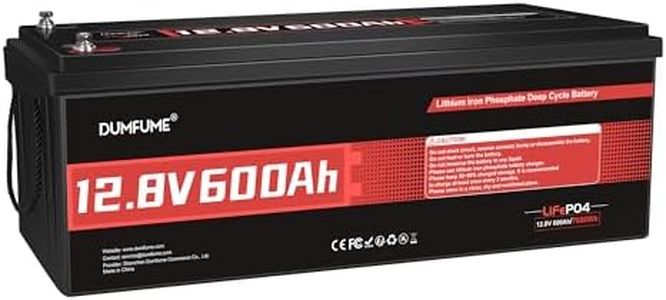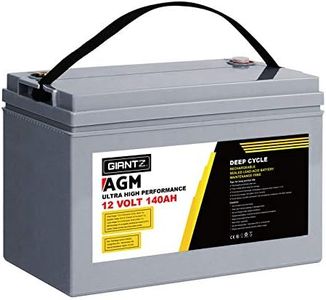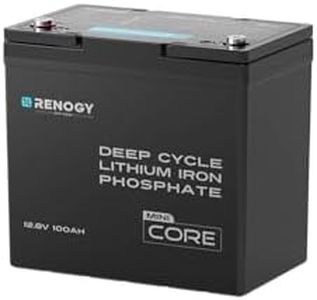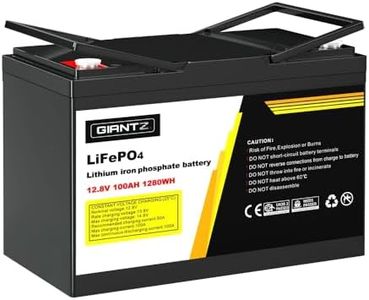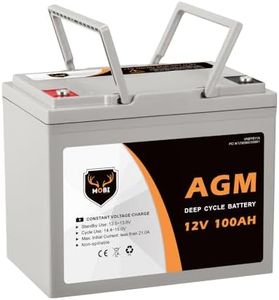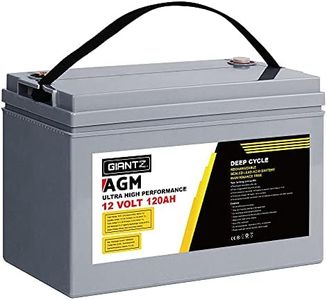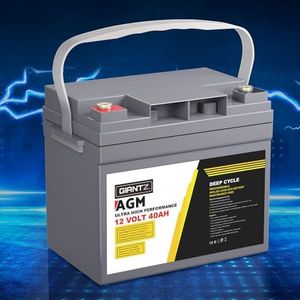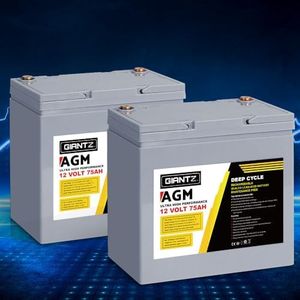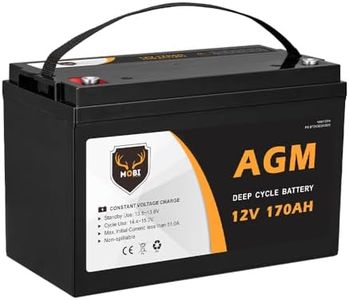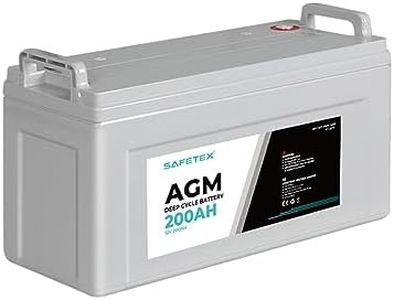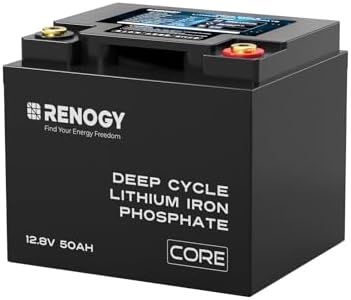We Use CookiesWe use cookies to enhance the security, performance,
functionality and for analytical and promotional activities. By continuing to browse this site you
are agreeing to our privacy policy
10 Best Deep Cycle Batteries
From leading brands and best sellers available on the web.Buying Guide for the Best Deep Cycle Batteries
Choosing the right deep-cycle battery is important if you want reliable, long-lasting performance for things like solar power systems, RVs, boats, golf carts, or off-grid applications. Deep-cycle batteries are different from regular car batteries because they are designed to provide steady power over a long period and can be repeatedly discharged without being damaged. Figuring out which battery is the best fit for you depends on understanding your energy needs, how often you’ll use the battery, and where it’ll be used. Knowing the key specifications helps you compare options and pick the one that will meet your needs and last a long time.Battery Type (Flooded, AGM, Gel, Lithium)Battery type refers to the internal design and the materials used inside the battery, which affects performance, maintenance, and lifespan. Flooded batteries require regular maintenance and checking of water levels but tend to be less expensive. AGM (Absorbed Glass Mat) and Gel batteries are sealed, maintenance-free, and more resistant to vibration, making them good for mobile or rough environments. Lithium batteries are lighter, have a longer lifespan, charge faster, and can be deeply discharged, but they typically cost more. To pick the right type, think about how much maintenance you’re willing to do, the environment you’ll use the battery in, and whether weight or space is an issue for you.
Capacity (Amp-Hour, Ah)The capacity of a deep-cycle battery, measured in amp-hours (Ah), tells you how much energy it can store and deliver over time. A higher Ah means more stored energy and longer use between charges. Batteries are available in a range of capacities, from small (under 50Ah) for light use, medium (50-150Ah) for most RV or solar applications, to large (over 150Ah) for heavy-duty or off-grid systems. To choose the right capacity, estimate how much power your equipment uses and how long you need it to run before recharging—add some extra to avoid running the battery down too low.
VoltageVoltage is the electrical pressure the battery provides, commonly 6V, 12V, or sometimes higher. Most small and medium systems use 12V batteries because they’re simple to wire and widely compatible. Multiple batteries can be combined to get higher voltages for bigger systems. Match the battery voltage to your equipment or system requirements to avoid damage and get the best performance.
Cycle LifeCycle life is the number of complete charge and discharge cycles a battery can handle before its capacity drops significantly. A higher cycle life means the battery will last longer with regular use. Standard batteries may be rated for a few hundred cycles, while better ones (especially lithium) can go into the thousands. If you plan to use your battery often, like for daily solar storage, look for a higher cycle life; for occasional use, a lower cycle life can be acceptable.
Depth of Discharge (DoD)Depth of Discharge indicates how much of the battery’s total capacity you can safely use before recharging. Some batteries, like lithium, tolerate deep discharges (over 80%), while others, like flooded lead-acid, should only be discharged to about 50% to prolong life. Consider how much power you typically need and match that with a battery whose recommended DoD fits your pattern, so you don’t wear it out too quickly.
Maintenance RequirementsSome deep-cycle batteries (like flooded lead-acid) need routine maintenance, such as adding water and cleaning terminals. Others (AGM, Gel, Lithium) are sealed and require no regular maintenance, which can be a big advantage for hard-to-reach or mobile applications. If you want convenience or may forget to do maintenance, opt for a maintenance-free style.
Size and WeightSize and weight are about physical dimensions and heaviness of the battery, which matter when space is limited or the battery will be moved around. Larger batteries usually have higher capacity but may be harder to handle or fit into small spaces. Check the measurements and weight especially if the battery will go in a compact spot or needs to be lifted frequently.
Temperature ToleranceSome batteries perform better in cold or hot temperatures than others. Extreme cold can reduce capacity in lead-acid batteries, while lithium batteries perform better at a wider range of temperatures. If your battery will be used outdoors or in unheated/uncooled areas, check how well it handles temperature extremes.
